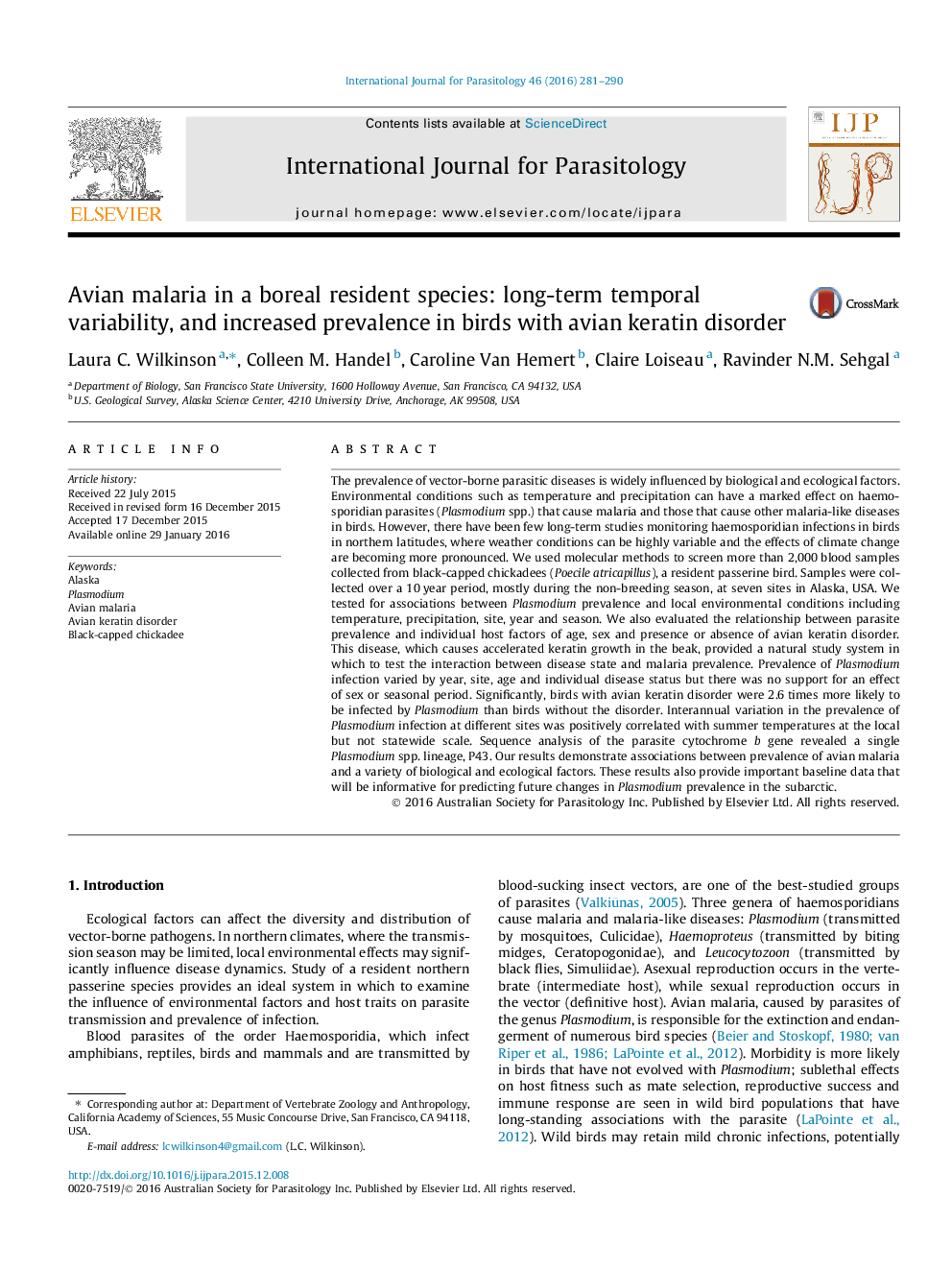| کد مقاله | کد نشریه | سال انتشار | مقاله انگلیسی | نسخه تمام متن |
|---|---|---|---|---|
| 2435957 | 1107234 | 2016 | 10 صفحه PDF | دانلود رایگان |
• Malaria presence was tested for association with biological and ecological factors.
• Birds with avian keratin disorder were 2.6 times more likely to have malaria.
• Malaria infection varied by both year and site collected.
• Malaria infection varied by age of bird sampled.
The prevalence of vector-borne parasitic diseases is widely influenced by biological and ecological factors. Environmental conditions such as temperature and precipitation can have a marked effect on haemosporidian parasites (Plasmodium spp.) that cause malaria and those that cause other malaria-like diseases in birds. However, there have been few long-term studies monitoring haemosporidian infections in birds in northern latitudes, where weather conditions can be highly variable and the effects of climate change are becoming more pronounced. We used molecular methods to screen more than 2,000 blood samples collected from black-capped chickadees (Poecile atricapillus), a resident passerine bird. Samples were collected over a 10 year period, mostly during the non-breeding season, at seven sites in Alaska, USA. We tested for associations between Plasmodium prevalence and local environmental conditions including temperature, precipitation, site, year and season. We also evaluated the relationship between parasite prevalence and individual host factors of age, sex and presence or absence of avian keratin disorder. This disease, which causes accelerated keratin growth in the beak, provided a natural study system in which to test the interaction between disease state and malaria prevalence. Prevalence of Plasmodium infection varied by year, site, age and individual disease status but there was no support for an effect of sex or seasonal period. Significantly, birds with avian keratin disorder were 2.6 times more likely to be infected by Plasmodium than birds without the disorder. Interannual variation in the prevalence of Plasmodium infection at different sites was positively correlated with summer temperatures at the local but not statewide scale. Sequence analysis of the parasite cytochrome b gene revealed a single Plasmodium spp. lineage, P43. Our results demonstrate associations between prevalence of avian malaria and a variety of biological and ecological factors. These results also provide important baseline data that will be informative for predicting future changes in Plasmodium prevalence in the subarctic.
Figure optionsDownload high-quality image (155 K)Download as PowerPoint slide
Journal: International Journal for Parasitology - Volume 46, Issue 4, April 2016, Pages 281–290
